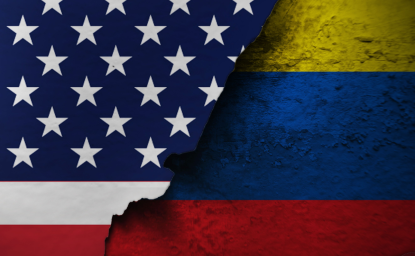Immigration is central to both the Canadian and American experiences. Both countries celebrate this heritage with impressive museums—the United States with the National Museum of Immigration on New York’s Ellis Island and Canada with the Canadian Museum of Immigration at Halifax’s Pier 21. Both museums tell the story of the struggle of those who came to North America seeking an alternative to poverty and oppression in their home countries.
Both Ellis Island and Pier 21 are closed right now as the two countries deal with the COVID-19 crisis. Both countries have instituted various forms of travel restrictions at their borders during the COVID-19 pandemic, which has affected each countries’ immigration process to different degrees. For instance, Canada can now send irregular crossers coming in from the United States back to the United States to seek asylum. And most recently, U.S. federal immigration agencies altered rules for F1 and M1 visas that hamper international students’ access to U.S. schools and President Trump signed an executive order in June of 2020 which halted new entries for H-1B, H-4, H-2B, L1, and J visas until January.[1] How this crisis will affect immigration in the long run in both countries remains to be seen. But before making any predictions or criticisms, we should note the similarities and differences between American and Canadian immigration history, popular attitudes, and law and policy, to gauge where immigration might be heading in and after this time of crisis.
Doors Open, Shut, Re-Open
The two countries have parallel immigration histories. Both began as thinly populated strips on the edge of a vast continent. Large immigration flows, originally from the British Isles and other Western European countries, expanded in the latter part of the nineteenth century to take in entries from Eastern and Southern Europe. Both countries saw backlash in the aftermath of World War I, with systems of preferences or quotas imposed to limit immigration from outside of Western Europe. Immigration from Asia was prohibited in both the United States and Canada.[2] Highly restrictive policies continued through the Great Depression, and in both countries, the door was largely shut to refugees from Nazi Germany. A Canadian immigration official infamously said of Jews seeking entry: “None is too many.”[3]
In subsequent decades both the United States and Canada saw major changes in their immigration systems. Canada took large numbers of displaced persons, including many from Eastern European countries occupied by the Soviet Union. More than 750,000 immigrants came to Canada between 1946 and 1953.[4] A “points” system was formally introduced into regulations in 1967, and then codified through the Immigration Acts of 1976 and 2002 which prioritized applicants’ education and occupational skills.[5] Under this system, Canada has absorbed approximately 250,000 immigrants per year in the last two decades with the numbers trending upward, reaching over 330,800 in 2019.[6]
Modern U.S. immigration law dates to the 1965 amendments to the Immigration and Nationality Act which abolished the existing system of quotas for individual countries. Instead, global quotas were established for the Eastern and Western Hemispheres. Quota-free immigration was provided for immediate relatives of U.S. citizens, while more distant relatives could come in under quotas, and were given preferred status, while skilled immigrants could enter under quotas subject to an employment offer and “labor certification” requirement. The Immigration Act of 1990 raised global quotas from 500,000 per year to 700,000, while establishing a separate “diversity” category for immigrants from under-represented countries.[7] Immigration to the United States (both quota and quota-free) has averaged over 1.1 million entries per year over the last twenty years.[8]
After taking office in 2017, President Trump, who has asserted, “our country is full,”[9] has made administrative changes tightening immigration policies. He banned immigration from several Muslim-majority countries citing terrorism concerns, cut the refugee quota, and most famously instituted construction of a “wall” along the Mexican border. In April of 2020, he ordered a formal suspension of many categories of immigration as part of the COVID-19 response.
Popular Attitudes Surprisingly Similar
In a recent poll of Canadians, only 2 percent of those asked said that they considered immigration to be the most important issue in the upcoming federal election.[10] In another poll, 63 percent disagreed with the statement that there was too much immigration, while 34 percent agreed.[11] Longitudinal data indicates a steady increase in support for immigration over time, from a mere 35 percent in 1977.[12] There may be some differentiation in how Canadians view distinct types of immigration. A 2019 poll showed that 76 percent of respondents supported increased efforts to encourage economic immigration to Canada while 57 percent opposed accepting more refugees.[13] Perhaps the strongest indication of consensus on immigration is the fact that during the last national election, the only party which called for reduced immigration, Maxime Bernier’s newly formed People’s Party of Canada, failed to gain a single seat in Parliament.
In the United States, immigration has become a national issue, having formed a major part of Donald Trump’s 2016 campaign and of his policy agenda since taking office. Interestingly, there is some indication that U.S. opinion is not necessarily anti-immigration. In a June 2019 survey, 37 percent of respondents favored current levels of immigration, 27 percent supported increased levels, and 35 percent supported decreased levels.[14] If those supporting current or increased levels are combined, at 64 percent, the level of support is similar to that which Canadian polling indicates. A range of other polling supports a generally positive attitude towards immigration.[15] There are, however, significant partisan differences, with, for instance, stronger support from Republicans for increasing deportations of unauthorized immigrants (83 percent) than among Democrats (31 percent), and stronger support among Democrats (85 percent) for taking in refugees from war and violence than among Republicans (58 percent).[16]
Canada is typically viewed as more welcoming of immigrants, as evidenced by its higher level of legal immigration per capita. But it could equally be argued that Canada simply gives more weight to hardheaded calculations of the economic value an immigrant can or cannot bring compared with more sentimental American concerns for family reunification, as well as being less impacted by irregular immigration. Canadians might be surprised to find praise for their approach from none other than President Trump. In May of 2019, he sketched out a proposed reform which advocated that:
[L]ike Canada, and so many other modern countries, we create an easy-to-navigate points-based selection system. You will get more points for being a younger worker, meaning you will contribute more to our social safety net. You will get more points for having a valuable skill, an offer of employment, an advanced skill or a plan to create jobs. [17]
Again, following the Canadian model, entry based on family reunification would be limited to immediate relatives. Using the rationale that salary is akin to value, this initial plan has resulted in a new directive from the White House that when the H-1B program re-opens next year, its lottery system will be replaced with a new system that accepts the highest paid applicants.[18]
[1] “Proclamation Suspending Entry of Aliens Who Present a Risk to the U.S. Labor Market Following the Coronavirus Outbreak,” The White House, (June 2020).
[2] Office of the Historian, “The Immigration Act of 1924 (The Johnson-Reed Act),” U.S. Department of State, (June 2020).
“100 Years of Immigration to Canada, 1900-1999,” Canadian Council for Refugees, (May 2000).
[3] Irving Abella and Donald Troper, “None is too Many: Canada and the Jews of Europe, 1933-48.” University of Toronto Press, (1983, reprinted 2012).
[4] “Canadian Immigration Policy, Post-World War II,” Family Search (material taken from the National Institute of Geneaological Studies), (June 2012).
[5] Lindsay Van Dyk, “Canadian Immigration Acts and Legislation,” Canadian Museum of Immigration at Pier 21.
[6] Statistics Canada, “150 years of immigration in Canada,” (May 2018).
Canada Visa, “Canada's Multi-Year Immigration Plan 2018 to 2021,” (June 2020).
[7] Center for Immigration Studies, “Historical Overview of Immigration Policy,” (June 2020).
[8] Phillip Martin, "Trends in Migration to the U.S.," Population Reference Bureau, (May 2014).
[9] Seung Min Kim and Tony Perry, “Our Country is Full... So Turn Around, Trump warns Immigrants during Border Roundtable,” The Washington Post, (April 5, 2019).
[10] Michelle Carbert, “Canadians continue to support immigration, despite concerns it would be election issue, new poll says,” The Globe and Mail, (November 2019).
[11] Environics Institute for Survey Research, "Canadian public opinion about immigration and refugees," (November 2019).
[12] Environics Institute for Survey Research, "Canadian public opinion about immigration and refugees," (November 2019).
[13] Angela Johnston, “Majority of Canadians Against Accepting More Refugees, Poll Suggests.” CBC News, (July 3, 2019).
[14] Galluo, “Immigration,” (June 2020).
[15] National Immigration Forum, “Polling Update: American Attitudes on Immigration Steady but Showing More Partisan Divides,” (April 17, 2019).
[16] Andrew Daniller, “Americans’ immigration policy priorities: Divisions between – and within – the two parties,” Pew Research Center, (November 2019).
[17] The White House, “Remarks by President Trump on Modernizing Our Immigration System for a Stronger America,” (May 16, 2019).
[18] The White House, “Proclamation Suspending Entry of Aliens Who Present a Risk to the U.S. Labor Market Following the Coronavirus Outbreak,” (June 2020).
Author

Former member of the Senior Foreign Service of the U.S. Department of State

Canada Institute
The mission of the Wilson Center's Canada Institute is to raise the level of knowledge of Canada in the United States, particularly within the Washington, DC policy community. Research projects, initiatives, podcasts, and publications cover contemporary Canada, US-Canadian relations, North American political economy, and Canada's global role as it intersects with US national interests. Read more





